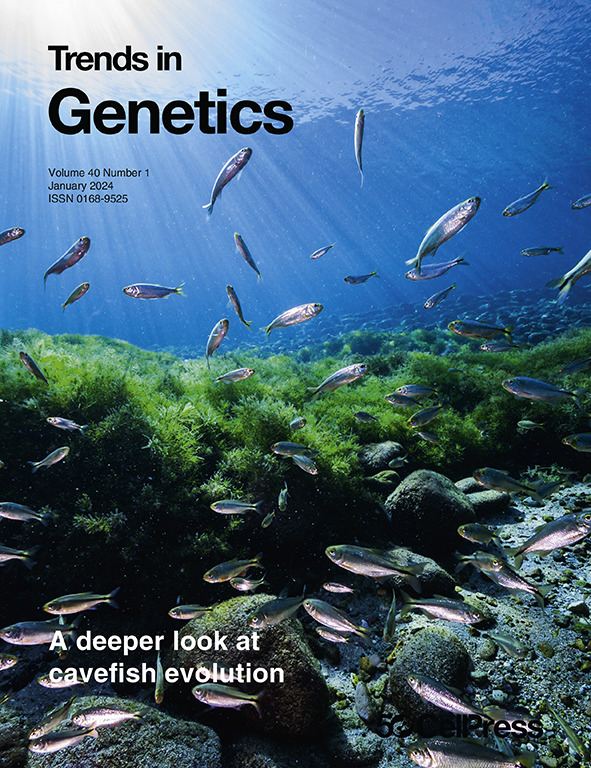生物复杂性的早期进化
IF 13.6
2区 生物学
Q1 GENETICS & HEREDITY
引用次数: 0
摘要
所有现存生命都是一个共同祖先的后裔,尽管这个祖先非常古老,但似乎是一个复杂的细胞有机体。穆迪(Moody)等人的一项新研究表明,这个祖先不仅是一个复杂的细胞,而且还生活在可能有其他复杂细胞居住的微生物生态环境中。本文章由计算机程序翻译,如有差异,请以英文原文为准。
The very early evolution of biological complexity.
All extant life is descended from a common ancestor, which, despite being very ancient, appears to have been a complex cellular organism. A new study by Moody et al. shows that this ancestor was not only a complex cell, but also lived within a microbial ecology likely inhabited by other complex cells.
求助全文
通过发布文献求助,成功后即可免费获取论文全文。
去求助
来源期刊

Trends in Genetics
生物-遗传学
CiteScore
20.90
自引率
0.90%
发文量
160
审稿时长
6-12 weeks
期刊介绍:
Launched in 1985, Trends in Genetics swiftly established itself as a "must-read" for geneticists, offering concise, accessible articles covering a spectrum of topics from developmental biology to evolution. This reputation endures, making TiG a cherished resource in the genetic research community. While evolving with the field, the journal now embraces new areas like genomics, epigenetics, and computational genetics, alongside its continued coverage of traditional subjects such as transcriptional regulation, population genetics, and chromosome biology.
Despite expanding its scope, the core objective of TiG remains steadfast: to furnish researchers and students with high-quality, innovative reviews, commentaries, and discussions, fostering an appreciation for advances in genetic research. Each issue of TiG presents lively and up-to-date Reviews and Opinions, alongside shorter articles like Science & Society and Spotlight pieces. Invited from leading researchers, Reviews objectively chronicle recent developments, Opinions provide a forum for debate and hypothesis, and shorter articles explore the intersection of genetics with science and policy, as well as emerging ideas in the field. All articles undergo rigorous peer-review.
 求助内容:
求助内容: 应助结果提醒方式:
应助结果提醒方式:


